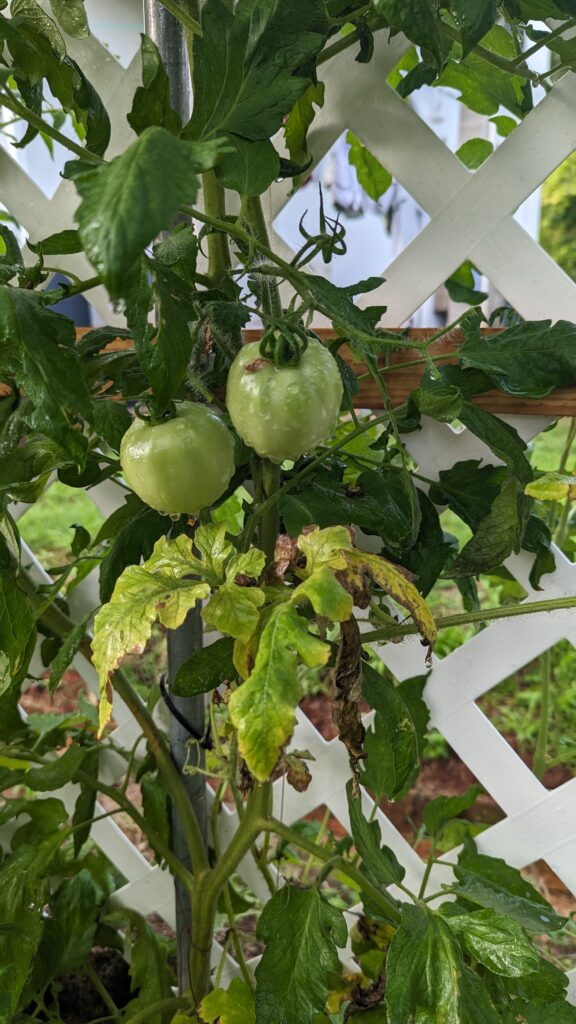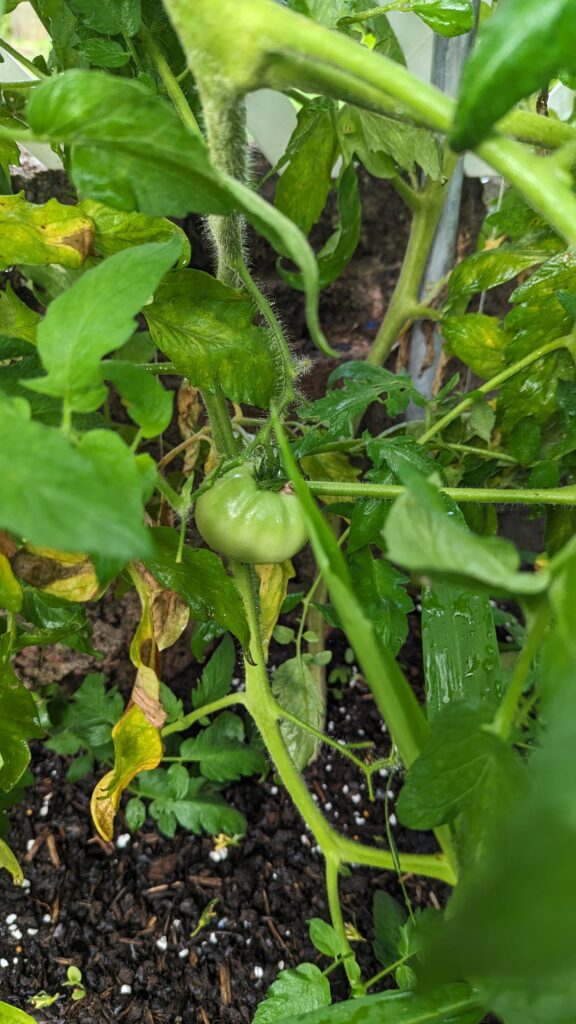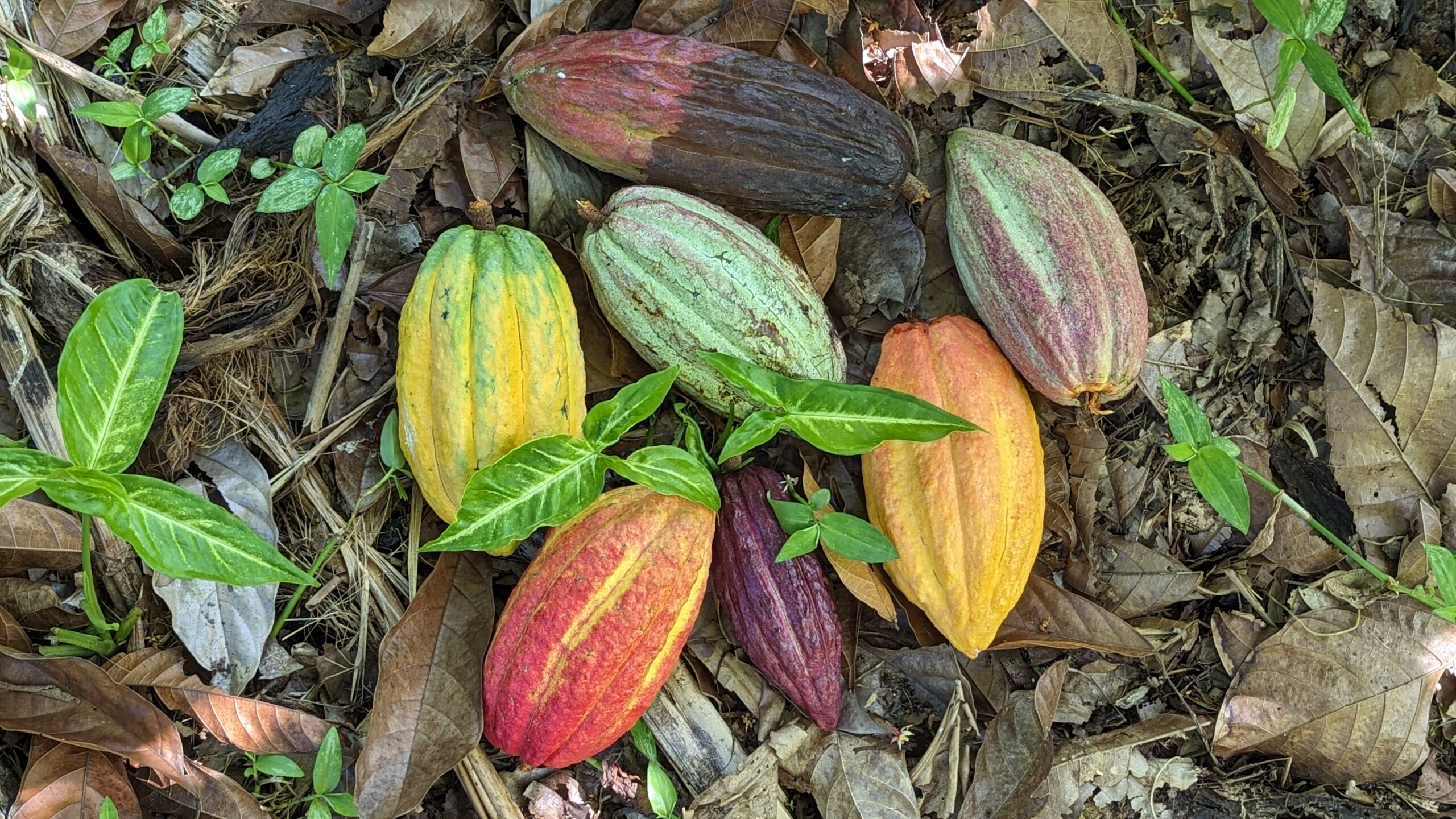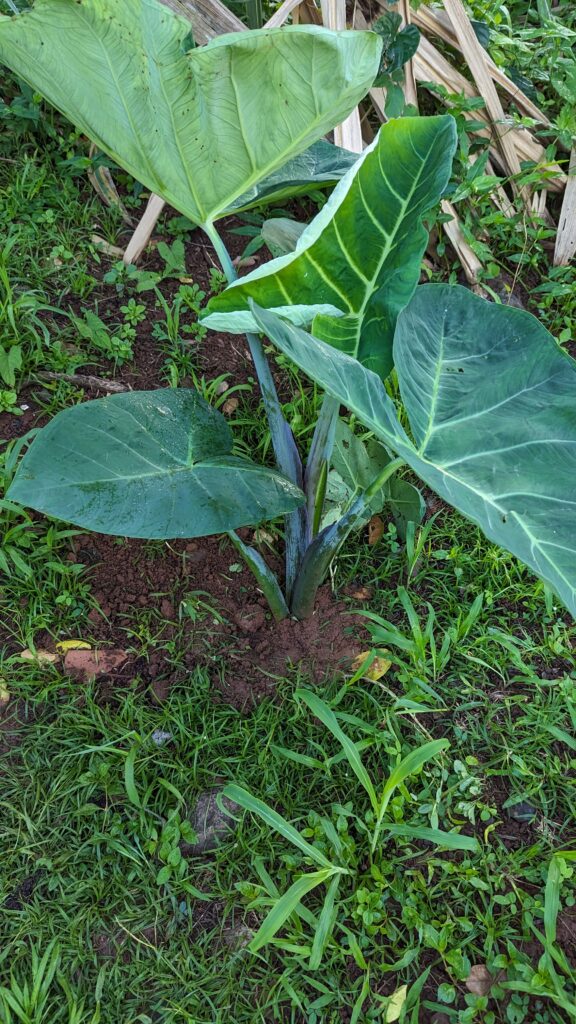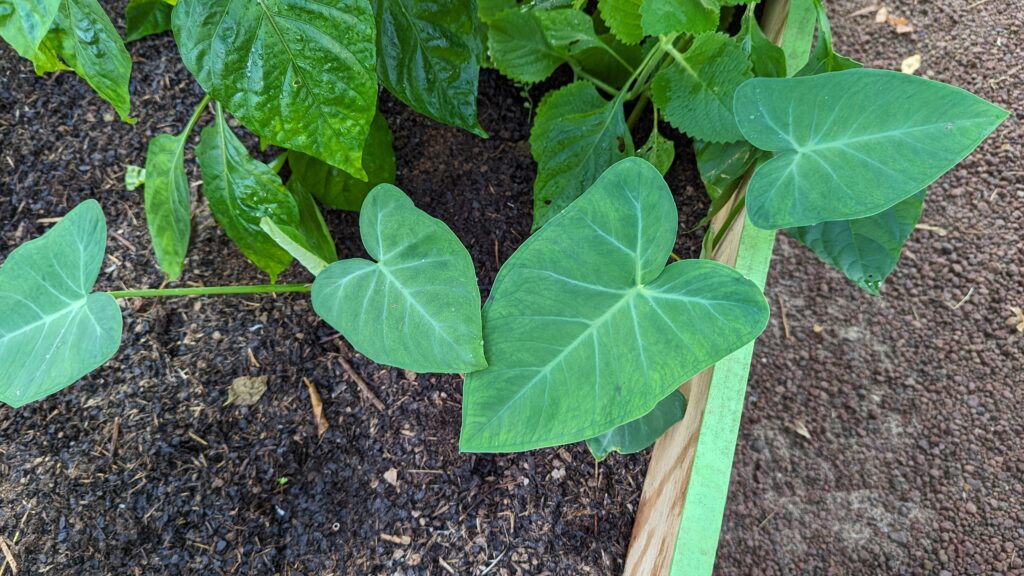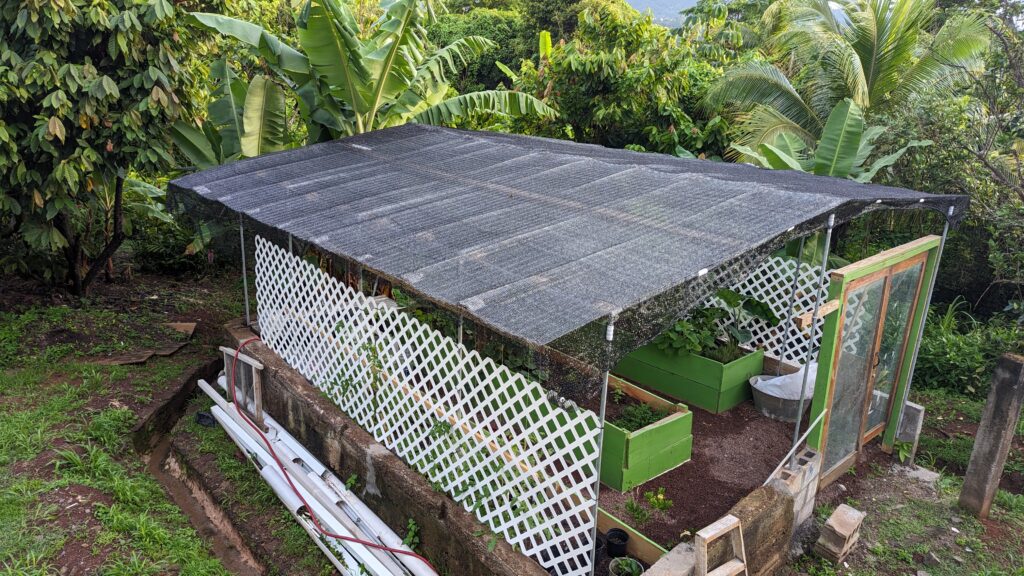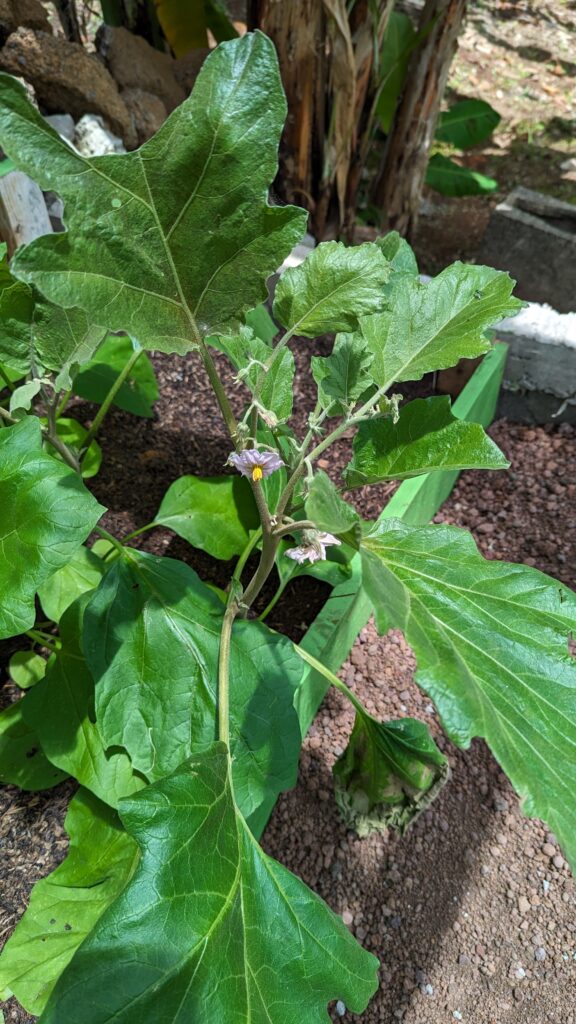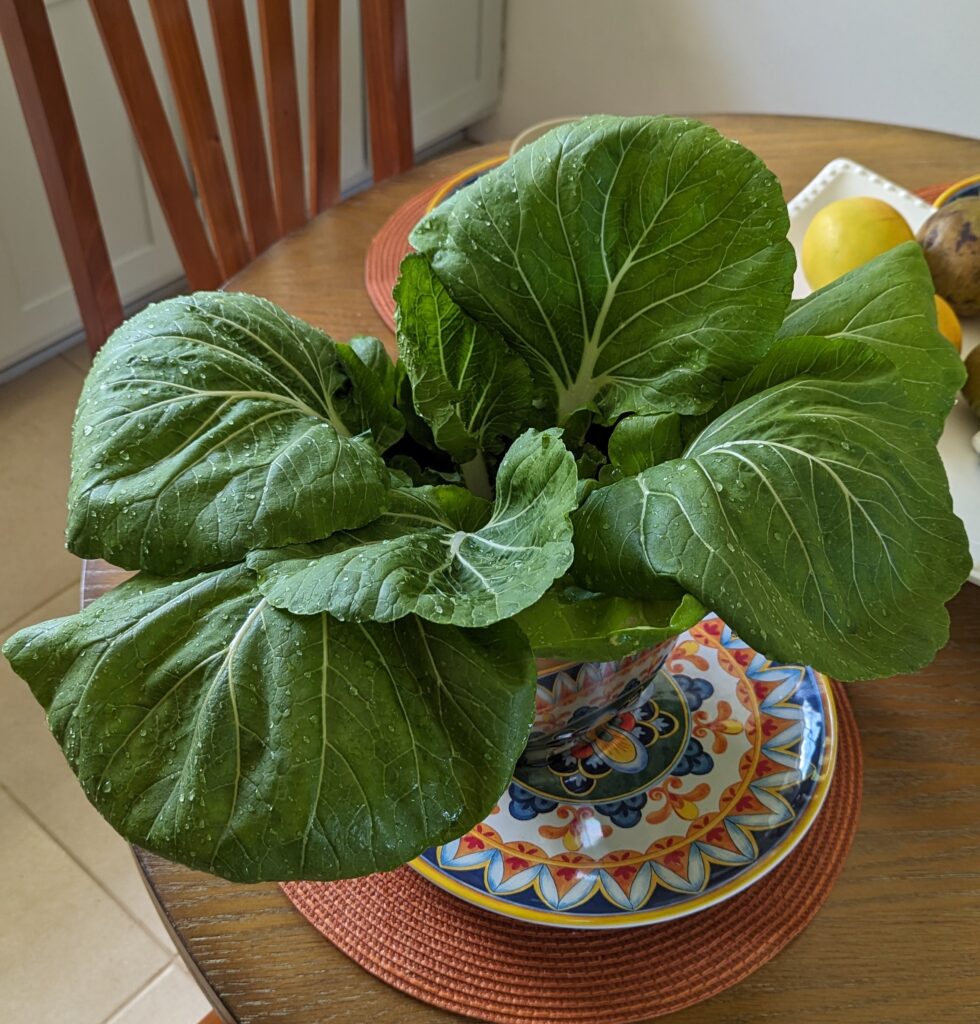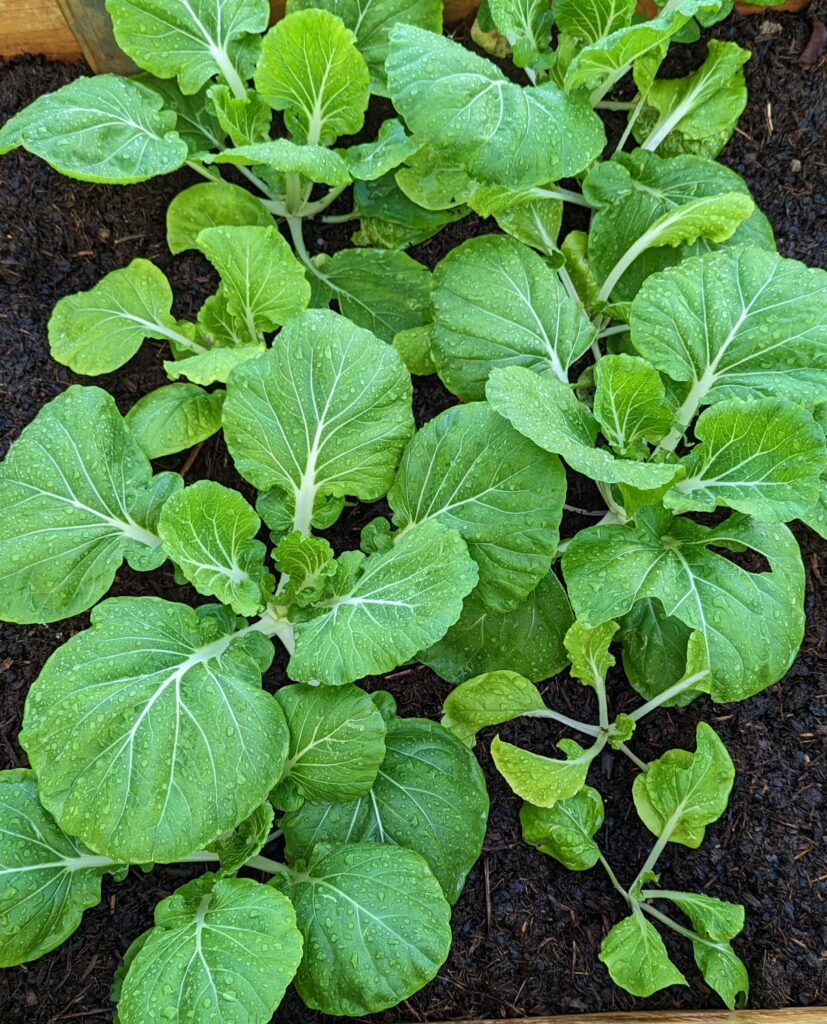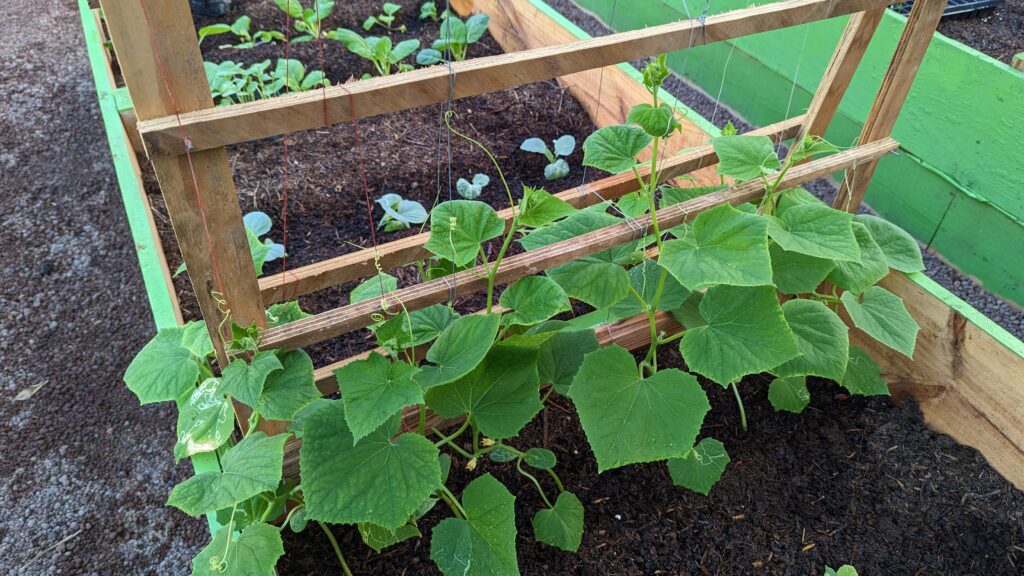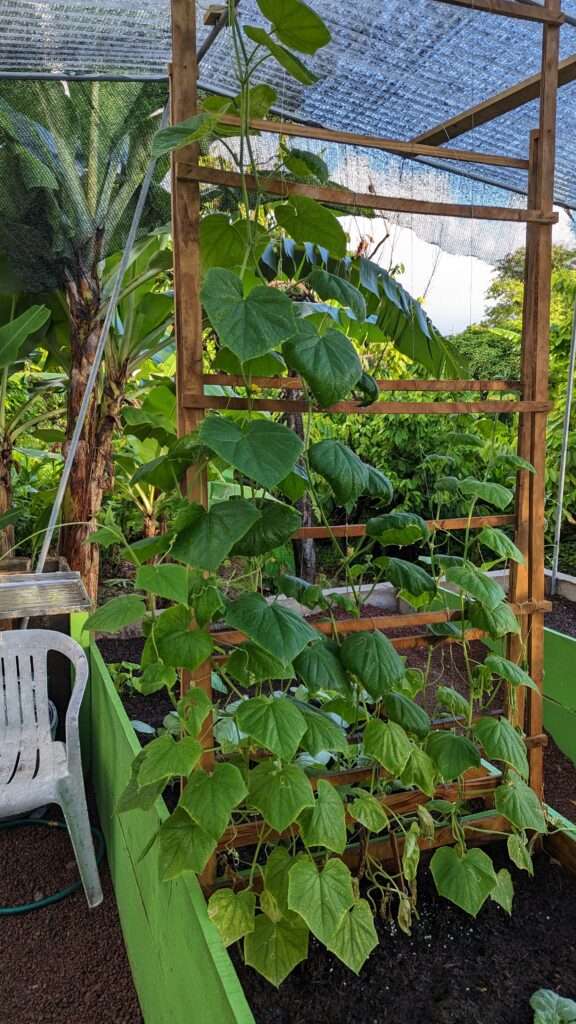For some reason, the very healthy looking tomato plants that continue to thrive are not bearing very many tomatoes at all. It may be soil acidity, or it may be the fact that this particular variety is not well suited to the climate. Either way, we only have this trio so far, which are looking great but could use some company.
